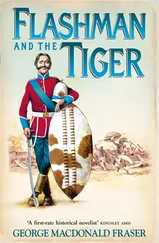Vince Houghton - Nuking the Moon - And Other Intelligence Schemes and Military Plots Left on the Drawing Board
Здесь есть возможность читать онлайн «Vince Houghton - Nuking the Moon - And Other Intelligence Schemes and Military Plots Left on the Drawing Board» весь текст электронной книги совершенно бесплатно (целиком полную версию без сокращений). В некоторых случаях можно слушать аудио, скачать через торрент в формате fb2 и присутствует краткое содержание. Город: New York, Год выпуска: 2019, ISBN: 2019, Издательство: Penguin Books, Жанр: История, Юмористические книги, на английском языке. Описание произведения, (предисловие) а так же отзывы посетителей доступны на портале библиотеки ЛибКат.
- Название:Nuking the Moon: And Other Intelligence Schemes and Military Plots Left on the Drawing Board
- Автор:
- Издательство:Penguin Books
- Жанр:
- Год:2019
- Город:New York
- ISBN:978-0-5255-0517-4
- Рейтинг книги:4 / 5. Голосов: 1
-
Избранное:Добавить в избранное
- Отзывы:
-
Ваша оценка:
- 80
- 1
- 2
- 3
- 4
- 5
Nuking the Moon: And Other Intelligence Schemes and Military Plots Left on the Drawing Board: краткое содержание, описание и аннотация
Предлагаем к чтению аннотацию, описание, краткое содержание или предисловие (зависит от того, что написал сам автор книги «Nuking the Moon: And Other Intelligence Schemes and Military Plots Left on the Drawing Board»). Если вы не нашли необходимую информацию о книге — напишите в комментариях, мы постараемся отыскать её.
Nuking the Moon: And Other Intelligence Schemes and Military Plots Left on the Drawing Board — читать онлайн бесплатно полную книгу (весь текст) целиком
Ниже представлен текст книги, разбитый по страницам. Система сохранения места последней прочитанной страницы, позволяет с удобством читать онлайн бесплатно книгу «Nuking the Moon: And Other Intelligence Schemes and Military Plots Left on the Drawing Board», без необходимости каждый раз заново искать на чём Вы остановились. Поставьте закладку, и сможете в любой момент перейти на страницу, на которой закончили чтение.
Интервал:
Закладка:
That made him the perfect advocate for Adams, someone who could give legitimacy to this wild scheme. He was the top bat guy around. The main bat dude. Bat person? Bat individual? There must be a better way of phrasing this, but I can’t put my finger on it…
And as it turns out, he actually thought Adams’s plan had a chance to work. In April 1942, he wrote his own letter to the NDRC in support of the project. “This proposal seems bizarre and visionary at first glance, but extensive experience with experimental biology convinces the writer [Griffin] that if executed competently it would have every chance of success.”
“Executed competently.” For most of the stories in this book, that’s an ominous phrase.
When I firstencountered this story, I thought, Sure, grab a bat. Use a zip tie to attach some explosives. Drop on Japan. How hard can that be? Well, according to people who actually know things about bats—like Griffin—it’s not that simple. Apparently there are about a thousand species of bat, and very few of them were appropriate for the mission. For instance, there’s a bat in Thailand that is so small it could land on your fingertip. And if you’re planning a trip to the Philippines, you might run into the giant flying fox bat and its six-foot wingspan. Good luck sleeping after that.
North America’s largest bat is the mastiff, which could potentially carry a one-pound stick of dynamite with its twenty-two-inch wingspan. The problem is there are not enough of them. The most common bat is the mule-eared bat, but it was probably too fragile to handle the rigors of the mission.
The Goldilocks choice—the one that was just right—was the Mexican free-tailed bat. Although it’s light (it weighs only one-third of an ounce), it can fly while carrying up to 18 grams, and there were millions of them in the southwestern United States. In just two caves in Texas, Ney and Bracken, scientists estimated there were twenty to thirty million Mexican free-taileds. This was enough to bomb most of Japan into ashes, and still have a couple million bats left over.
While the bat search was under way, the NDRC assigned the task of developing the incendiary device to Harvard organic chemist Dr. Louis Fieser. An accomplished chemist who was twice considered for the Nobel Prize in Physiology or Medicine (in 1941 and 1942) for his work on the structure of vitamin K, Fieser was now using his genius to develop weapons of war. One of his inventions would become both an important warfighting tool for decades and a source of controversy and dissent: napalm.
Fieser and his team of chemists at Harvard invented synthetic napalm in 1942 (the first tests were held on a football field behind Harvard Business School). Napalm is a mixture of petroleum (usually gasoline) and a gelatin agent. This allows it to burn very hotly, and to stick to whatever objects it encounters (buildings, vehicles, people). The chemistry of napalm lets it pack a huge punch at a relatively light weight. Remember when I said that the Mexican free-tailed bat could carry up to 18 grams? Fieser built an inflammable celluloid case filled with napalm that weighed, along with the igniter, 17.5 grams.
All that was left to do was test it.
The first test of the bat bomb concept took place in May 1943 at Muroc Dry Lake in the Mojave Desert of California. Muroc, now called Rogers Dry Lake, is now known as a legendary location for postwar aviation. It later became the home of Edwards Air Force Base, where American fighter jock test pilots pushed the “outside of the envelope” and challenged the limits of what could be done in the air (Chuck Yeager was at Edwards when he became the first human to break the sound barrier in 1947). Until the early 1990s, Muroc served as a landing field for the Space Shuttle.
The Muroc bat tests did not go well.
To get the thirty-five hundred bats that the team had captured at Carlsbad Caverns to the California desert, the animals were placed in refrigerators that artificially forced them into a state of hibernation. This was a necessary step—the bats needed to be docile for transport. The idea was to allow for enough time for them to wake up.
But the team miscalculated. During a test drop from a B-25 bomber flying at only five thousand feet, many (if not most) of the bats failed to come completely out of hibernation. Gravity works on bats much in the same way as it works on everything else. And while bats have wings, they can’t fly if they are asleep.
Fortunately, no one in power attended the Muroc tests. If they had, there might never have been a second one.
But there was a second test, and this one went much better than the first. Or maybe much worse. You be the judge.
For test number two, the bat squad was moved to an operational Army Air Force base in Carlsbad, quite near to the caves that were home to the test subjects. They still needed to force the bats into hibernation, but the close proximity would allow for a shorter duration, and the team hoped this could help them to better control the experiment.
And it worked. Sort of. Many of the bats in the Carlsbad experiment woke up!
But it was a particularly warm summer day in Carlsbad, and so the team miscalculated again. The bats woke up too quickly, and dozens escaped before they could be put on the test aircraft—but not before they had been fitted with their incendiaries, which were controlled by a timed ignition.
The good news is that several of the bats flew straight to the constructed test village, designed to simulate a Japanese town, and burned it to the ground.
The bad news is that other bats flew to the operational airfield—and its hangars, and control tower, and barracks, and offices. Because the project was so secret, the team did not have firefighters on hand—this would have looked too conspicuous. Even the commander of the Carlsbad base was not in the “need to know,” so when he showed up with his fire team, he was prohibited from entering his own facility . He—and everyone else—just had to wait and watch the airfield burn.
The base commander was not amused. And apparently neither was the Army. Shortly after the Carlsbad test, the Army decided to cancel the project. Fortunately for Adams and his team, a Marine general by the name of Louis DeHaven had quietly observed the Carlsbad test (unbeknownst to Adams). DeHaven was not principally concerned with the damage that had been done to the Army airfield (knowing as many Marines as I do, I’d venture he thought it was pretty damn funny). He saw the potential in the program’s concept and convinced the Navy to pick it up. Up until then, the program hadn’t developed to the point at which it had been given a formal name. Most everyone was just calling it the “Adams Plan.” The Navy decided to give it one: Project X-Ray.
The first Navy tests for Project X-Ray began in December 1943. Some were successful, but it soon became clear that a more powerful incendiary device would be necessary before the bat bombs could be combat-ready. For the next round of testing, scheduled for August 1944, new and more powerful incendiaries were planned for what would be a full-scale bomber test—the closest yet to actual operational conditions.
But as quickly as the Navy had given Lytle Adams’s dream a second chance, they pulled the rug out from under Project X-Ray. By this point, the program had already cost an estimated $2 million (the equivalent of about $30 million today), but when the Chief of Naval Operations (CNO), Fleet Admiral Ernest King, heard that the project would not be ready until mid-1945 (at the earliest), he immediately canceled the operation. “It [has] been decided to terminate the X-Ray project. This has not been based on any shortcomings of the incendiary and time units developed by NDRC, but rather upon the shortcomings of the fundamental idea and the opportunity of getting sufficient reliable data in order to plan a timely operation.” In essence, just because they could do it didn’t mean it was a good idea, especially given the timeliness of winning a war threatening the very notion of democracy.
Читать дальшеИнтервал:
Закладка:
Похожие книги на «Nuking the Moon: And Other Intelligence Schemes and Military Plots Left on the Drawing Board»
Представляем Вашему вниманию похожие книги на «Nuking the Moon: And Other Intelligence Schemes and Military Plots Left on the Drawing Board» списком для выбора. Мы отобрали схожую по названию и смыслу литературу в надежде предоставить читателям больше вариантов отыскать новые, интересные, ещё непрочитанные произведения.
Обсуждение, отзывы о книге «Nuking the Moon: And Other Intelligence Schemes and Military Plots Left on the Drawing Board» и просто собственные мнения читателей. Оставьте ваши комментарии, напишите, что Вы думаете о произведении, его смысле или главных героях. Укажите что конкретно понравилось, а что нет, и почему Вы так считаете.











